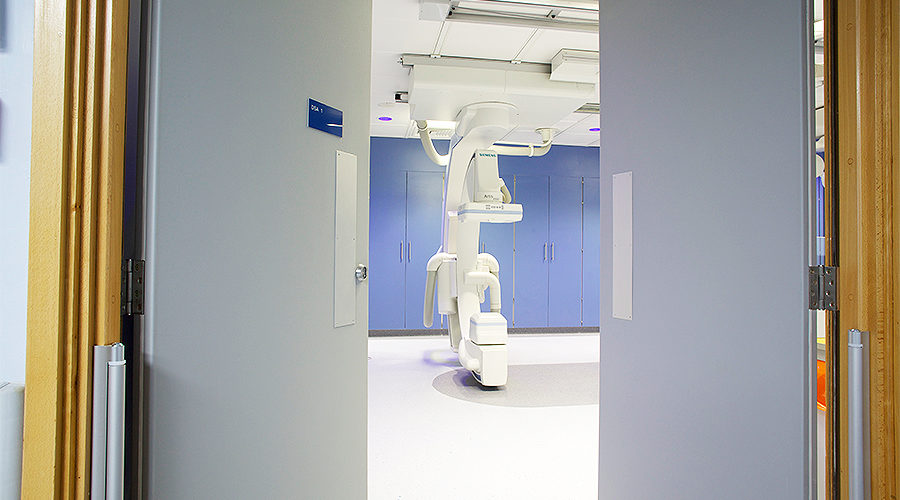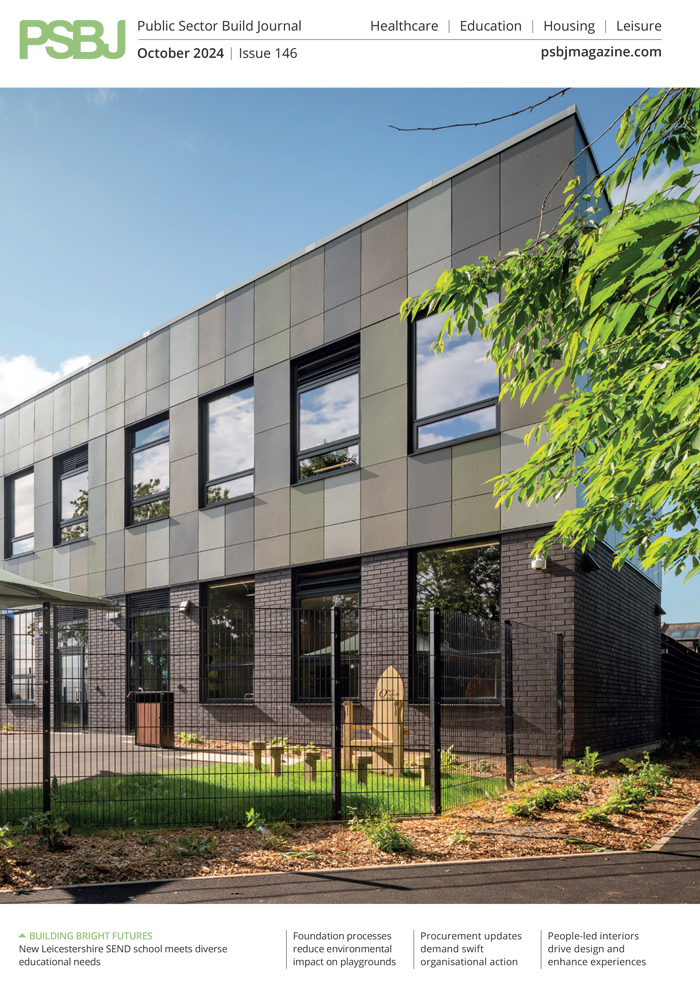Phil Barsby, Business Development Director of Intastop, offers advice on how the challenges of rising costs combined with rising patient numbers can be overcome and repair and maintenance (R&M) costs proactively managed.
Intastop
The rising cost of pretty much everything, combined with rising patient numbers, is presenting challenges for many healthcare sectors as balancing the books, financially and metaphorically, becomes ever more difficult.
With healthcare environments facing increased pressure and subsequent high traffic, facilities management teams are undoubtedly tasked with finding ways of keeping buildings clean and presentable whilst keeping costs associated with this to a minimum.
Key elements of consideration when maintaining healthcare facilities, ranging from hospital wards and corridors to mental health facilities, is to ensure building infrastructures are protected and that they are easy to clean and maintain, supporting infection control policies as required.
Wear and tear
Any facilities manager of a healthcare establishment will be only too familiar with the intense wear and tear that is placed on its infrastructure each and every day. As the NHS begins to tackle the COVID-19 backlog, that wear and tear is only set to escalate.
From doors and walls being knocked with equipment or patient trolleys and chairs, to walls in waiting rooms being scuffed, to doors being maintained to the necessary fire safety standards, maintaining any healthcare setting to the required standard can be expensive and time consuming.
Recognising that many of our healthcare settings are ageing and require robust solutions to transform them into facilities that are fit for the demands and patient volumes of the 21st century, facilities managers are turning ever more to products that offer a strong return on investment, minimise ongoing care and maintenance and, wherever possible, deliver cost savings allowing budgets to be invested in other essential, service-led items.
In research carried out by Intastop, it was found that in an average hospital for doors alone, £32,400 could be saved by protecting vulnerable door edges, £1500 by protecting vulnerable door frames and £32,400 by protecting vulnerable door faces. These costs are not insignificant. Add in other extra day-to-day costs of maintaining damaged doors and similarly walls and it will be easy to see how these costs will escalate as facilities become older and navigate their way through the high traffic volumes predicted for the next few years.
The positive impact of well-maintained doors
Doors are an integral part of any hospital or healthcare setting and provide not only privacy and noise management, but also play a key part in fire safety plans.
Ensuring that doors are maintained to a high standard is something that should not be compromised on. When door faces, frames and edges become damaged, bacteria is more able to penetrate surfaces and cleaning of those surfaces can become ineffective. By protecting them with sheeting that has anti-microbial properties impregnated throughout it, bacteria are no longer able to adhere to the surface, cleaning becomes faster and easier, and infection control is managed to a much higher standard.
Specifying door protection at the time of construction or refit is clearly the preferred option, although retrofit is highly successful and delivers the same benefits.
Door protection encompasses functionality too, therefore, robust hinges should be considered. Doors that are in constant use can be affected by weak hinges, which results in the doors dropping making them ineffective in operation and cause damage to the door and the floor. Choosing a full mortice hinge will dissipate the strain across the full length of the hinge and eliminating the risk of the door dropping whilst providing a smooth, seamless opening and closing operation.
Doors can also present a hazard in some secure mental health settings. By incorporating anti-ligature solutions, such as door top and door bottom alarms, shrouded hinges and tamper-proof vision panels, not only the door integrity will remain intact, but the patient will remain safe in a secure environment.
Why walls matter
Walls, particularly where they join floors, can be a harbourer of bacteria and can be hard to clean especially where surfaces may be porous, may stain easily or may be damaged.
Protecting walls in such areas, or parts of walls where headboards or chair backs may damage them can, once again, improve the aesthetic appearance of a ward, waiting area or consultation room and can also aid infection control and enhance patient safety. Translate the use of anti-bacterial wall sheeting into an operating theatre or room where medical procedures are carried out, and the benefits of investing in wall protection becomes even more evident. Infection control and cleaning procedures are elevated considerably.
And, whilst protecting walls is important, they can also integrate into building schemes and be aesthetically pleasing. Several products can be used to differentiate between certain areas, support patient wellbeing by creating a calming ambience through the use of colour or image, or deliver stylish functionality giving directional or situation information.
Making the right investment
Specifying products, such as those from Intastop’s comprehensive wall and door protection ranges, means that costs can be managed more effectively.
Whether it is for a new-build, complete or even a singular retrofit project, making an upfront investment in the right products to protect walls and doors and people can deliver a handsome return on investment in the long term. Specification of the correct products to protect building infrastructure can avoid eventual expenditure. It can also decrease maintenance costs, reduce cleaning times, eliminate opportunities for harmful bacteria to linger on surfaces and provide a safer environment for all.
In addition to aesthetic and maintenance benefits, there is the added reassurance of products manufactured by Intastop being fire safety rated to the necessary standards bringing an added, but hidden, level of protection to building users and occupants.










